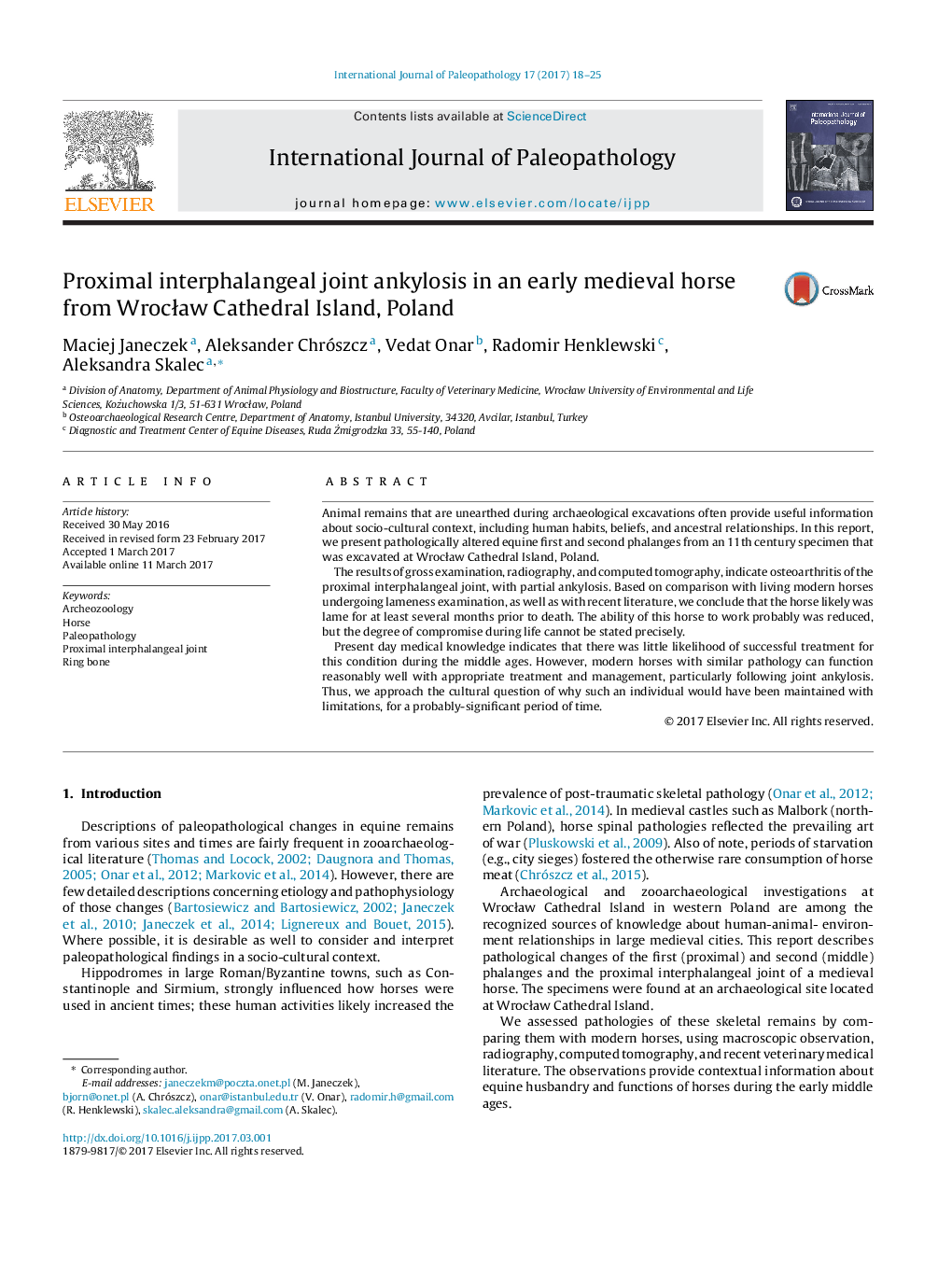| Article ID | Journal | Published Year | Pages | File Type |
|---|---|---|---|---|
| 6463033 | International Journal of Paleopathology | 2017 | 8 Pages |
Animal remains that are unearthed during archaeological excavations often provide useful information about socio-cultural context, including human habits, beliefs, and ancestral relationships. In this report, we present pathologically altered equine first and second phalanges from an 11th century specimen that was excavated at WrocÅaw Cathedral Island, Poland.The results of gross examination, radiography, and computed tomography, indicate osteoarthritis of the proximal interphalangeal joint, with partial ankylosis. Based on comparison with living modern horses undergoing lameness examination, as well as with recent literature, we conclude that the horse likely was lame for at least several months prior to death. The ability of this horse to work probably was reduced, but the degree of compromise during life cannot be stated precisely.Present day medical knowledge indicates that there was little likelihood of successful treatment for this condition during the middle ages. However, modern horses with similar pathology can function reasonably well with appropriate treatment and management, particularly following joint ankylosis. Thus, we approach the cultural question of why such an individual would have been maintained with limitations, for a probably-significant period of time.
